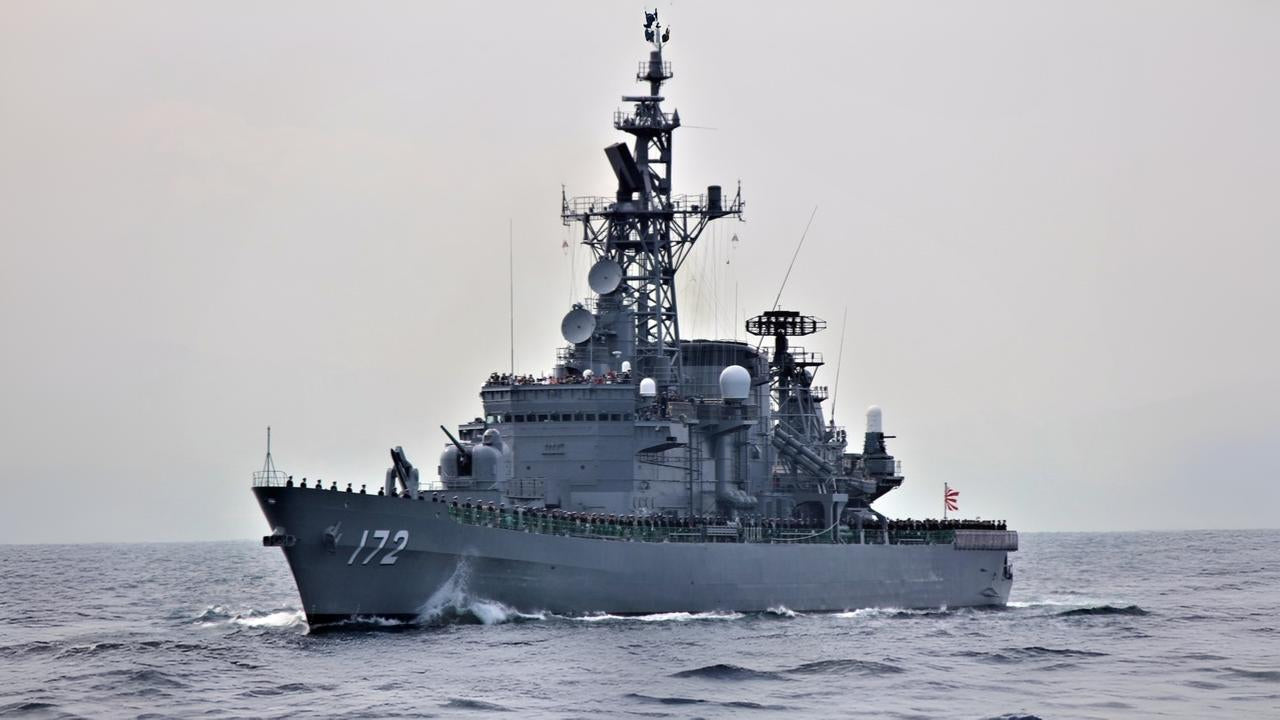The name Shimakaze, meaning "Island Wind," has graced the seas aboard three distinct Japanese warships. Each vessel, separated by decades and dramatic shifts in naval technology, served a unique role and left its own mark on maritime history. From a swift early destroyer to a powerful wartime super-destroyer and a modern guided-missile ship, the legacy of Shimakaze symbolizes innovation and national defense through the eras.
The Pioneering Shimakaze (1920)

(Shimakaze in 1922, image: wikipedia)
The first to bear the name was the Japanese destroyer Shimakaze, launched in 1920. Belonging to the Minekaze-class, this vessel represented a new generation of fast, agile destroyers. Built after World War I, she contributed to Japan's growing naval capabilities during a period of rapid global advancements in ship design and strategy.
Initially designed for torpedo attacks and fleet screening, Shimakaze saw varied service in the interwar years. As naval roles evolved, she was eventually reclassified and renamed Patrol Boat No.1 in 1940, indicating a shift from frontline combat. Tragically, she met her end in 1943, sunk while performing duties during World War II.
The World War II Super-Destroyer (1942)

(Shimakaze on sea trials at Miyazu Bay, 5 May 1943, image: wikipedia)
The second vessel, Japanese destroyer Shimakaze (1942), emerged during the height of World War II. A unique, experimental design, she was conceived as a "super-destroyer," emphasizing immense speed and a potent torpedo armament. Launched in 1942, she aimed to provide a decisive advantage in the fierce Pacific naval engagements.
Despite her advanced capabilities and powerful offensive potential, this Shimakaze’s operational lifespan was brief. Designed for a specific tactical role, her contribution was limited by the changing tide of the war. She ultimately succumbed to enemy action, being sunk in 1944, marking a valiant yet short service for this innovative warship.
The Modern Guardian: JS Shimakaze (DDG-172)

(JS Shimakaze/DDG-172 firing in a gunnery exercise on 21 December 2015, image: wikipedia)
The legacy continued with JS Shimakaze (DDG-172), a Hatakaze-class guided missile destroyer. Commissioned in 1988, this modern warship serves with the Japan Maritime Self-Defense Force (JMSDF). Equipped with advanced missile systems and radar, she represents Japan's contemporary commitment to naval defense and regional security, a stark contrast to her predecessors.

As a crucial component of the JMSDF's fleet, JS Shimakaze performs various missions, from anti-air warfare to general patrol duties. Her name carries the historical weight of swiftness and adaptability, now applied to a vessel designed for the complexities of modern naval operations and maintaining peace in challenging maritime environments.
An Enduring Inspiration
![Fujimi [PRE ORDER] IJN Destroyer Shimakaze Late Type 1942 - BanzaiHobby](https://cdn.shopify.com/s/files/1/0697/0064/9236/files/Fujimi_PRE_ORDER_IJN_Destroyer_Shimakaze_Late_Type_1942_-_BanzaiHobby-335912_480x480.jpg?v=1752147445)
The enduring history of the Shimakaze ships, from torpedo destroyer to missile-armed guardian, continues to captivate. Their progression mirrors Japan's naval evolution and technological prowess, inspiring maritime enthusiasts, historians, and particularly, the scale model hobby community. These vessels offer endless fascination for modelers who diligently recreate their forms, celebrating their enduring presence in naval history.















